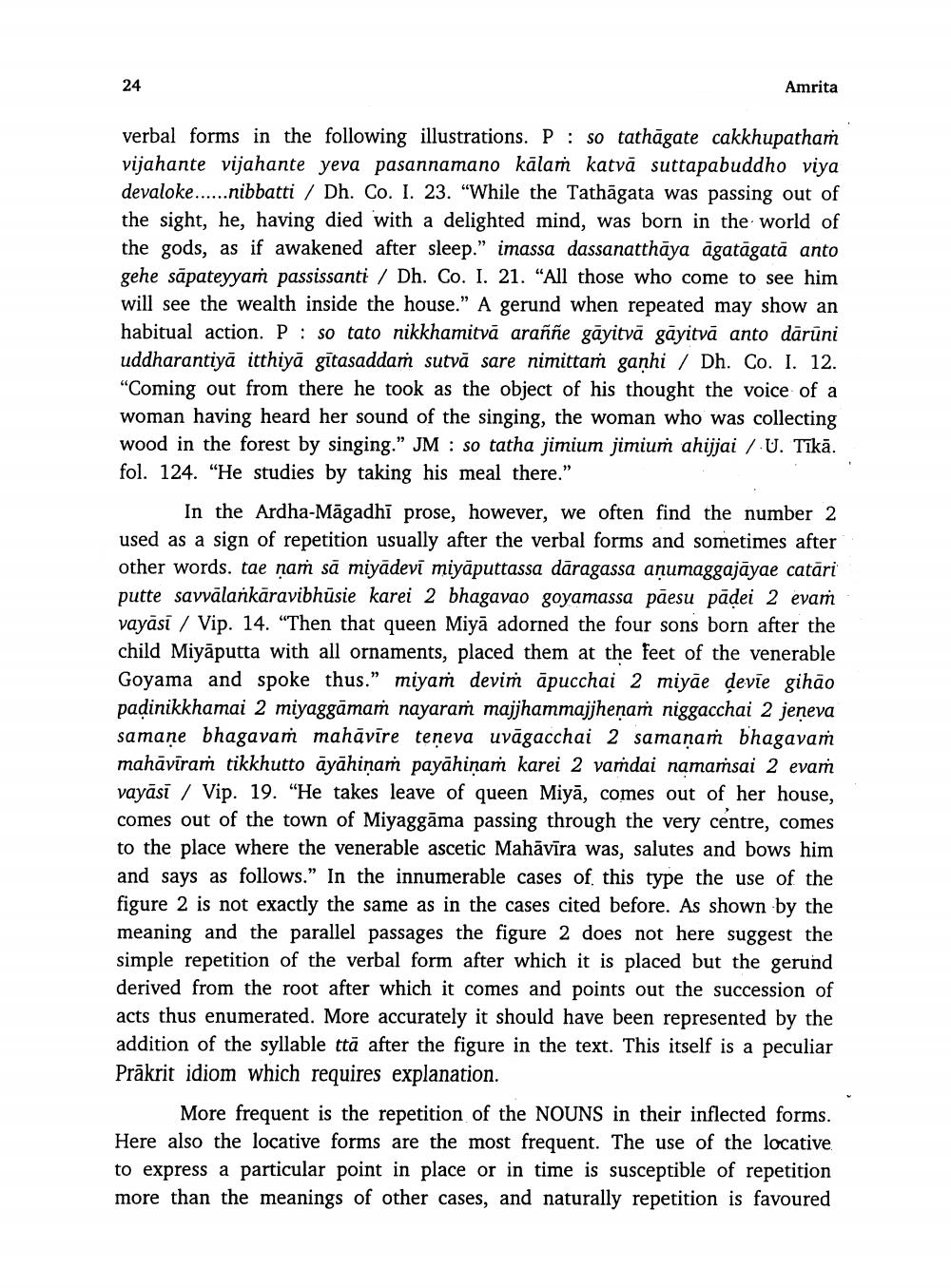________________
Amrita
verbal forms in the following illustrations. P: so tathāgate cakkhupatham vijahante vijahante yeva pasannamano kālaṁ katvā suttapabuddho viya devaloke......nibbatti / Dh. Co. I. 23. "While the Tathāgata was passing out of the sight, he, having died with a delighted mind, was born in the world of the gods, as if awakened after sleep." imassa dassanatthāya agatāgatā anto gehe săpateyyam passissanti / Dh. Co. I. 21. "All those who come to see him will see the wealth inside the house." A gerund when repeated may show an habitual action. P: so tato nikkhamitvā araññe gāyitvā gāyitvā anto dārūni uddharantiyā itthiyā gītasaddam sutvā sare nimittam ganhi / Dh. Co. I. 12. “Coming out from there he took as the object of his thought the voice of a woman having heard her sound of the singing, the woman who was collecting wood in the forest by singing." JM : so tatha jimium jimium ahijjai / U. Tīkā. fol. 124. "He studies by taking his meal there."
In the Ardha-Māgadhī prose, however, we often find the number 2 used as a sign of repetition usually after the verbal forms and sometimes after other words. tae nam sā miyadevi miyāputtassa dāragassa anumaggajāyae catāri putte savvālankāravibhūsie karei 2 bhagavao goyamassa pāesu pādei 2 evam vayāsī / Vip. 14. “Then that queen Miyā adorned the four sons born after the child Miyāputta with all ornaments, placed them at the feet of the venerable Goyama and spoke thus." miyam devim āpucchai 2 miyāe devie gihão padinikkhamai 2 miyaggamam nayaram majjhammajjhenaṁ niggacchai 2 jeneva samane bhagavam mahāvīre teneva uvāgacchai 2 samaņam bhagavam mahāvīram tikkhutto āyāhinam payāhinam karei 2 vamdai namamsai 2 evam vayāsi / Vip. 19. “He takes leave of queen Miyā, comes out of her house, comes out of the town of Miyaggāma passing through the very centre, comes to the place where the venerable ascetic Mahāvīra was, salutes and bows him and says as follows." In the innumerable cases of this type the use of the figure 2 is not exactly the same as in the cases cited before. As shown by the meaning and the parallel passages the figure 2 does not here suggest the simple repetition of the verbal form after which it is placed but the gerund derived from the root after which it comes and points out the succession of acts thus enumerated. More accurately it should have been represented by the addition of the syllable ttä after the figure in the text. This itself is a peculiar Prākrit idiom which requires explanation.
More frequent is the repetition of the NOUNS in their inflected forms. Here also the locative forms are the most frequent. The use of the locative to express a particular point in place or in time is susceptible of repetition more than the meanings of other cases, and naturally repetition is favoured




